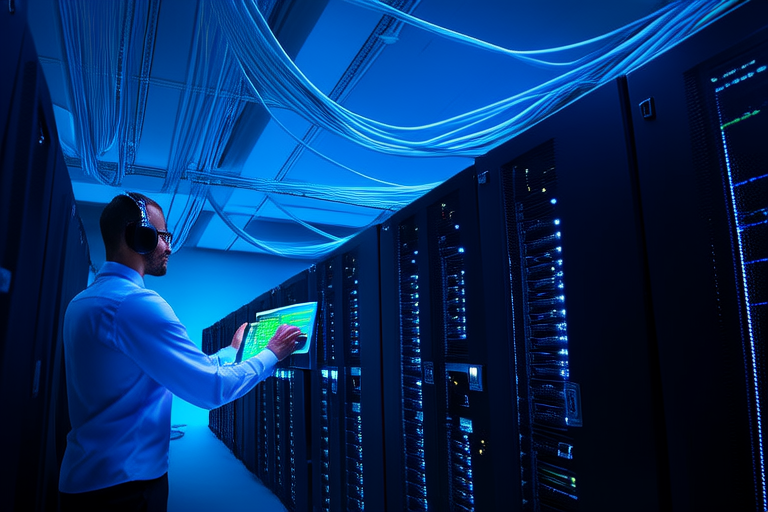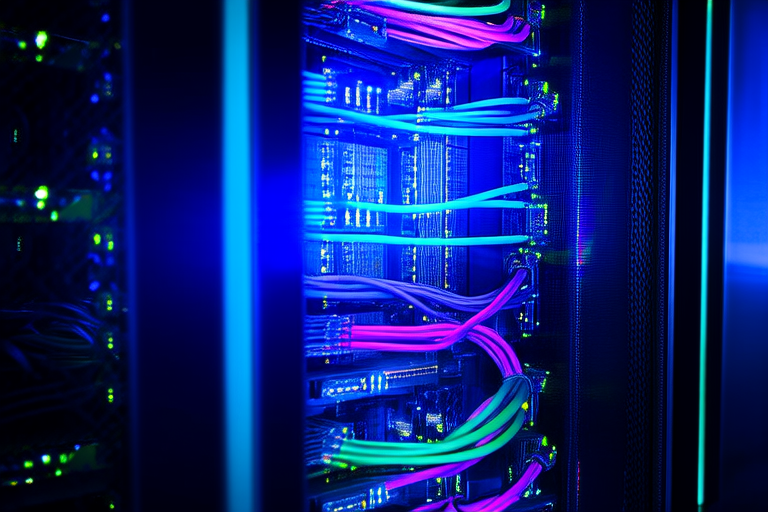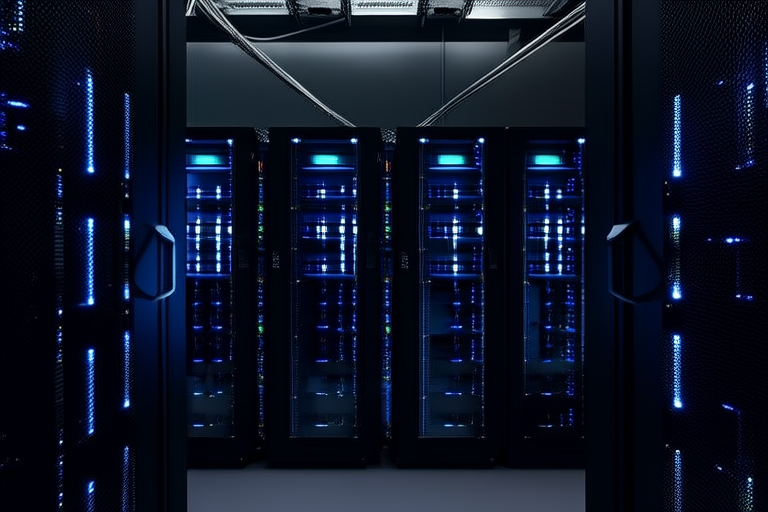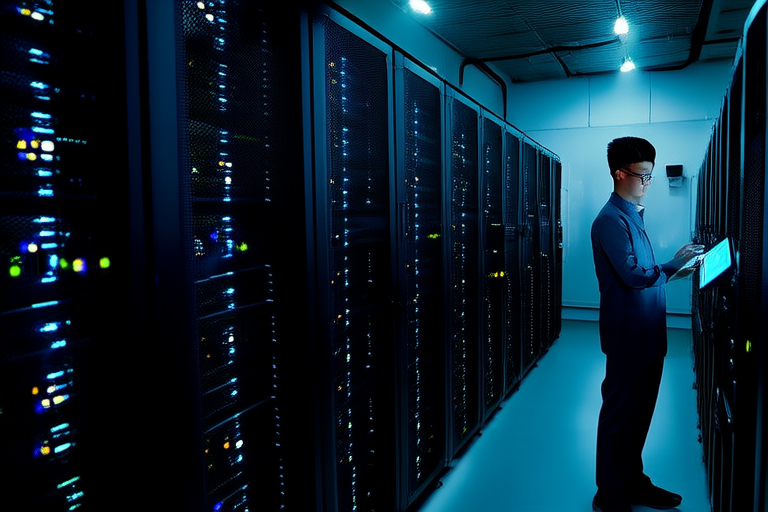“`html
Navigating the Future: Integrating Cloud and Edge Computing Strategies
Introduction
In today’s rapidly evolving digital landscape, businesses are increasingly turning to advanced technologies to drive innovation and efficiency. Two of the most transformative technologies in this regard are cloud computing and edge computing. While cloud computing has long been recognized for its ability to provide scalable, cost-effective, and accessible solutions, edge computing is gaining prominence due to its unique capability to process data closer to where it is generated. This article explores the integration of these two technologies, highlighting the challenges and opportunities they present.
The convergence of cloud and edge computing offers a powerful solution for handling the growing demands of data-intensive applications. By combining the strengths of both technologies, organizations can achieve greater efficiency, reduced latency, and improved decision-making capabilities. This article will delve into the definitions, benefits, and use cases of cloud and edge computing, followed by an exploration of the challenges and future trends in their integration.
Section 1: Understanding Cloud Computing
Definition and Key Components
Cloud computing refers to the delivery of computing services—such as servers, storage, databases, networking, software, analytics, and intelligence—over the internet (“the cloud”). Instead of owning and maintaining physical hardware, businesses can access these resources on demand through a pay-as-you-go model. The three primary categories of cloud computing services are:
- Infrastructure as a Service (IaaS): Provides virtualized computing resources over the internet. Users can deploy and run operating systems and applications.
- Platform as a Service (PaaS): Offers development tools and frameworks to build, test, and deploy applications without managing the underlying infrastructure.
- Software as a Service (SaaS): Delivers fully functional applications over the internet, eliminating the need for local installation and management.
Benefits of Cloud Computing
Cloud computing offers numerous benefits, including:
- Scalability: Resources can be easily scaled up or down based on demand.
- Cost-effectiveness: Reduces the need for on-premises infrastructure, lowering capital expenditure.
- Accessibility: Provides remote access to resources from any location with an internet connection.
Leading cloud providers include Amazon Web Services (AWS), Microsoft Azure, and Google Cloud, which have significantly shaped the industry with their innovative offerings.
Section 2: Understanding Edge Computing
Definition and Role
Edge computing involves processing data at the edge of the network, closer to where it is generated, rather than sending all data to a centralized cloud server. This approach minimizes latency, reduces bandwidth usage, and enhances real-time decision-making. In essence, edge computing brings computation and data storage closer to the devices or locations where it is needed.
Addressing Latency and Bandwidth Issues
One of the primary advantages of edge computing is its ability to address latency issues. In scenarios where milliseconds matter, such as autonomous driving or real-time medical diagnostics, edge computing ensures that critical decisions are made locally, without waiting for data to travel back and forth to a distant cloud server. Additionally, by processing data closer to its source, edge computing reduces the amount of data that needs to be transmitted over the network, thereby conserving bandwidth.
Industries Benefiting from Edge Computing
Several industries are already reaping the benefits of edge computing, including:
- Manufacturing: Real-time monitoring and predictive maintenance of equipment.
- Healthcare: Remote patient monitoring and real-time analysis of medical data.
- Autonomous Vehicles: Decision-making in real-time for safe navigation.
Section 3: The Intersection of Cloud and Edge Computing
Complementary Strengths
Cloud and edge computing are not mutually exclusive; instead, they complement each other. While edge computing excels in handling time-sensitive tasks and reducing latency, cloud computing provides the necessary storage, processing power, and analytics capabilities for more complex tasks. Together, they form a hybrid system that optimizes resource utilization and performance.
Architecture of Hybrid Systems
A typical hybrid system integrates cloud and edge computing by distributing workloads across both environments. Data is processed at the edge for immediate action, while more complex data is sent to the cloud for further analysis and storage. This architecture ensures that critical decisions are made locally, while non-time-sensitive tasks are handled efficiently in the cloud.
Use Cases for Integration
The combination of cloud and edge computing provides significant advantages in several use cases:
- Smart Cities: Real-time traffic management and environmental monitoring.
- Industrial IoT: Predictive maintenance and real-time analytics for machinery.
- Augmented Reality: Low-latency experiences for users in remote locations.
Section 4: Challenges and Considerations
Potential Challenges
Integrating cloud and edge computing comes with its own set of challenges, including:
- Security Concerns: Ensuring data privacy and protection at the edge requires robust security measures.
- Data Management: Handling large volumes of data generated at the edge requires efficient storage and processing solutions.
- Interoperability: Ensuring seamless communication between edge devices and cloud platforms.
Strategies for Overcoming Challenges
To overcome these challenges, organizations can adopt the following strategies:
- Implement Strong Security Protocols: Use encryption, secure authentication, and regular audits to protect data at the edge.
- Optimize Data Management: Utilize edge analytics and efficient data compression techniques to manage large datasets.
- Foster Interoperability: Adopt open standards and APIs to ensure seamless communication between edge devices and cloud platforms.
Section 5: Future Trends and Innovations
Emerging Trends
The future of cloud and edge computing is promising, with several emerging trends shaping the industry:
- 5G Networks: The rollout of 5G networks will enable faster data transfer and support more connected devices.
- IoT Advancements: Increased adoption of IoT devices will drive the need for edge computing solutions.
- AI Integration: Artificial intelligence will play a pivotal role in enhancing the capabilities of both cloud and edge computing.
Predicted Developments
Future developments in cloud and edge computing are expected to have a profound impact on various industries:
- Enhanced Real-Time Analytics: More sophisticated algorithms will enable real-time insights and predictions.
- Improved Cybersecurity: Advanced security measures will protect data at both the edge and in the cloud.
- Increased Automation: Autonomous systems will become more prevalent in manufacturing and logistics.
Organizations should stay informed about ongoing research and technological breakthroughs to remain competitive in this rapidly evolving landscape.
Conclusion
The integration of cloud and edge computing strategies is essential for organizations looking to navigate the future of technology. By leveraging the complementary strengths of both technologies, businesses can achieve greater efficiency, reduced latency, and improved decision-making capabilities. As the digital landscape continues to evolve, proactive planning and collaboration between IT teams and business leaders will be crucial for success.
Embracing cloud and edge computing not only enhances operational efficiency but also positions organizations to take advantage of emerging trends and innovations. By staying ahead of the curve, businesses can remain competitive and continue to drive innovation in the ever-changing tech landscape.
“`




